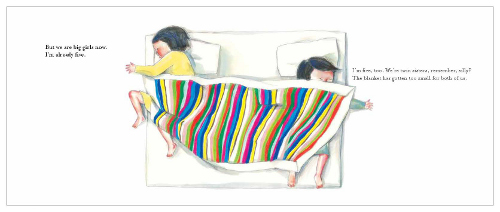
“But we are big girls now. I’m already five. I’m five, too. We’re twin sisters, remember, silly? The blanket has gotten too small for both of us.”
(Click to enlarge spread.)
“Some picture books are written for children; this one gives a sense of what it’s like to be one,” Publishers Weekly wrote about author/illustrator Hyewon Yum’s 2008 debut picture book. Well, now. That’s nothin’ to sneeze at, that’s for sure, for one’s first picture book title.
 What’s that? You’re wondering about the picture above, though? It’s a bit early, I know, to be featuring some spreads from a picture book scheduled to be released in August of this year. I know, I know, dear readers. I’m all over the place, seeing as how on Sunday I featured a title from 2009. But, well… What can I say? I follow 7-Imp’s own weird, whacked-out rules. (I just made the blog sound like some kind of imp-like spirit. See what happens when I don’t get enough sleep?) Anywhoozles (7-Imp, the imp-like spirit, also lets me use annoying words like “anywhoozles”), I really like the work of Korea-born-but-now-Brooklyn-dwellling author/illustrator Hyewon Yum, who created the above spread, as well as two previous titles whose artwork rather wows me. I featured Last Night, her 2008 debut title, here in August of that year. And last year, Hyewon received the Founders Award from the Society of Illustrators for There Are No Scary Wolves (in the 2010 category of “Original Art: Celebrating the Fine Art of Children’s Book Illustration”).
What’s that? You’re wondering about the picture above, though? It’s a bit early, I know, to be featuring some spreads from a picture book scheduled to be released in August of this year. I know, I know, dear readers. I’m all over the place, seeing as how on Sunday I featured a title from 2009. But, well… What can I say? I follow 7-Imp’s own weird, whacked-out rules. (I just made the blog sound like some kind of imp-like spirit. See what happens when I don’t get enough sleep?) Anywhoozles (7-Imp, the imp-like spirit, also lets me use annoying words like “anywhoozles”), I really like the work of Korea-born-but-now-Brooklyn-dwellling author/illustrator Hyewon Yum, who created the above spread, as well as two previous titles whose artwork rather wows me. I featured Last Night, her 2008 debut title, here in August of that year. And last year, Hyewon received the Founders Award from the Society of Illustrators for There Are No Scary Wolves (in the 2010 category of “Original Art: Celebrating the Fine Art of Children’s Book Illustration”).
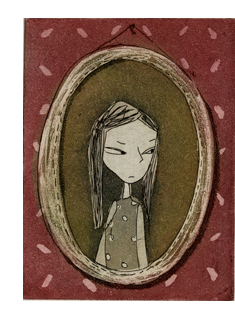 Her upcoming 2011 title, The Twins’ Blanket, featured above (and more below)—which addresses the emotional highs and lows (competition, envy, undeniable bond) of twin-dom—goes to show that she’s continuing her streak of creating books that, in the words (again) of Publishers Weekly, offer us insight into the perceptions of small children. Typically using linoleum block prints, her illustrations are fascinating, depicting both the joy and the darker side of those mysterious things that are the inner worlds of children. Booklist also wrote about her debut title that the absence of text gave kids “room to think,” especially considering the “depth and emotion” she conveyed through the art. You see, I LOVE THAT. I want my life’s music, art, and books—all of it, thanks very much—to give me space to breathe and think. And any children’s book that does that for the wee ones, too, is a good one, in my book. And, really, how often do we see that in picture books? Think about it. Talk amongst yourselves. And get back to me, if you’re so inclined, and we’ll discuss.
Her upcoming 2011 title, The Twins’ Blanket, featured above (and more below)—which addresses the emotional highs and lows (competition, envy, undeniable bond) of twin-dom—goes to show that she’s continuing her streak of creating books that, in the words (again) of Publishers Weekly, offer us insight into the perceptions of small children. Typically using linoleum block prints, her illustrations are fascinating, depicting both the joy and the darker side of those mysterious things that are the inner worlds of children. Booklist also wrote about her debut title that the absence of text gave kids “room to think,” especially considering the “depth and emotion” she conveyed through the art. You see, I LOVE THAT. I want my life’s music, art, and books—all of it, thanks very much—to give me space to breathe and think. And any children’s book that does that for the wee ones, too, is a good one, in my book. And, really, how often do we see that in picture books? Think about it. Talk amongst yourselves. And get back to me, if you’re so inclined, and we’ll discuss.
Hyewon’s here for breakfast. Her only request? A “large cup of black coffee, please.” Why, I can certainly do that. Always. Let’s get right to it, and I thank her for stopping by… Read the rest of this entry �
 Sunday, February 27th, 2011
Sunday, February 27th, 2011
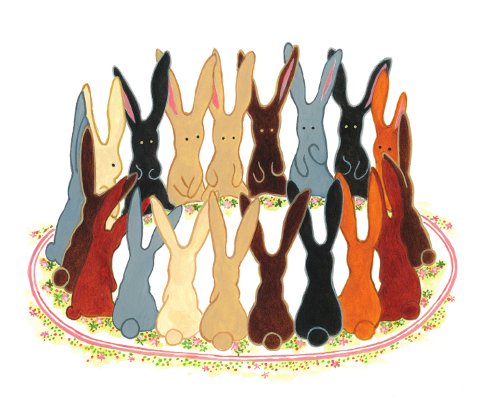
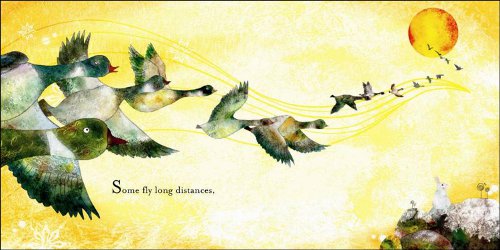

 Jules: It’s time to welcome again the very smart Italian blogger with kickin’-good taste,
Jules: It’s time to welcome again the very smart Italian blogger with kickin’-good taste, 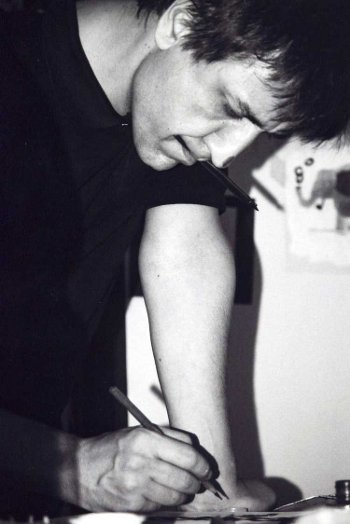 Cris: Complete with mischievous glances and easy-going conversations, often enriched by the expression “hombre,” Javier Zabala embodies all the Spanish pleasantness and the professionalism that only a great artist has when it’s time to open up to others — with humility and generosity.
Cris: Complete with mischievous glances and easy-going conversations, often enriched by the expression “hombre,” Javier Zabala embodies all the Spanish pleasantness and the professionalism that only a great artist has when it’s time to open up to others — with humility and generosity.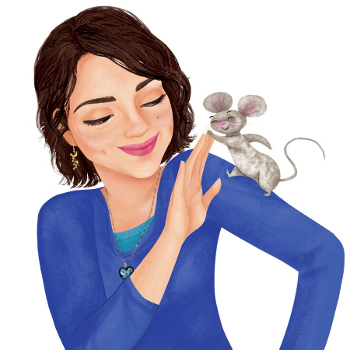 It was
It was 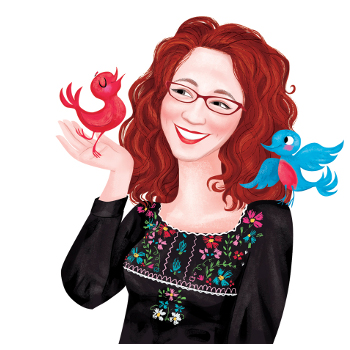 We are talkin’ fairy tales here, so it all kicks off with a “once upon a time,” but then Esmé kicks it up a notch, while also paring it all down, with a series of one-word questions devoted to various fairy tales. A mother puts her young son to bed: “Kiss? Yes. Water? Yes. Bedtime? NOOOOO!” Here come the Three Little Pigs to the rescue. In spot illustrations, we see “Sticks? Yes. Straw? Yes. Bricks? Yes. Solar panels? NOOOOO!” This is the drill for each fairy tale. (The Three Little Pigs are followed by Little Red Riding Hood, Jack and the Beanstalk, Cinderella, Hansel and Gretel, and The Three Bears.) But each fairy-tale moment ends with a detailed double-page spread that proposes a “well, maybe” scenario, each one fairly outlandish and unexpected: Those solar panels get put to use after all, and an all-organic community garden springs up in the pigs’ new neighborhood (as you can see in the spread Elisa shares below); Red’s grandma opens a beauty salon for wolves (also below); Cinderella and her prince go disco-dancing; and more.
We are talkin’ fairy tales here, so it all kicks off with a “once upon a time,” but then Esmé kicks it up a notch, while also paring it all down, with a series of one-word questions devoted to various fairy tales. A mother puts her young son to bed: “Kiss? Yes. Water? Yes. Bedtime? NOOOOO!” Here come the Three Little Pigs to the rescue. In spot illustrations, we see “Sticks? Yes. Straw? Yes. Bricks? Yes. Solar panels? NOOOOO!” This is the drill for each fairy tale. (The Three Little Pigs are followed by Little Red Riding Hood, Jack and the Beanstalk, Cinderella, Hansel and Gretel, and The Three Bears.) But each fairy-tale moment ends with a detailed double-page spread that proposes a “well, maybe” scenario, each one fairly outlandish and unexpected: Those solar panels get put to use after all, and an all-organic community garden springs up in the pigs’ new neighborhood (as you can see in the spread Elisa shares below); Red’s grandma opens a beauty salon for wolves (also below); Cinderella and her prince go disco-dancing; and more. 

 What’s that? You’re wondering about the picture above, though? It’s a bit early, I know, to be featuring some spreads from a picture book scheduled to be released in August of this year. I know, I know, dear readers. I’m all over the place, seeing as how on Sunday
What’s that? You’re wondering about the picture above, though? It’s a bit early, I know, to be featuring some spreads from a picture book scheduled to be released in August of this year. I know, I know, dear readers. I’m all over the place, seeing as how on Sunday  Her upcoming 2011 title, The Twins’ Blanket, featured above (and more below)—which addresses the emotional highs and lows (competition, envy, undeniable bond) of twin-dom—goes to show that she’s continuing her streak of creating books that, in the words (again) of Publishers Weekly, offer us insight into the perceptions of small children. Typically using linoleum block prints, her illustrations are fascinating, depicting both the joy and the darker side of those mysterious things that are the inner worlds of children. Booklist also wrote about her debut title that the absence of text gave kids “room to think,” especially considering the “depth and emotion” she conveyed through the art. You see, I LOVE THAT. I want my life’s music, art, and books—all of it, thanks very much—to give me space to breathe and think. And any children’s book that does that for the wee ones, too, is a good one, in my book. And, really, how often do we see that in picture books? Think about it. Talk amongst yourselves. And get back to me, if you’re so inclined, and we’ll discuss.
Her upcoming 2011 title, The Twins’ Blanket, featured above (and more below)—which addresses the emotional highs and lows (competition, envy, undeniable bond) of twin-dom—goes to show that she’s continuing her streak of creating books that, in the words (again) of Publishers Weekly, offer us insight into the perceptions of small children. Typically using linoleum block prints, her illustrations are fascinating, depicting both the joy and the darker side of those mysterious things that are the inner worlds of children. Booklist also wrote about her debut title that the absence of text gave kids “room to think,” especially considering the “depth and emotion” she conveyed through the art. You see, I LOVE THAT. I want my life’s music, art, and books—all of it, thanks very much—to give me space to breathe and think. And any children’s book that does that for the wee ones, too, is a good one, in my book. And, really, how often do we see that in picture books? Think about it. Talk amongst yourselves. And get back to me, if you’re so inclined, and we’ll discuss. 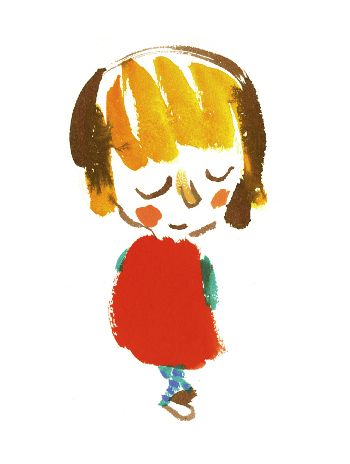 Well, there are two reasons I’m primarily just going to show you some illustrations today (more art is after the jump), yet not say too terribly much about the book from which they come,
Well, there are two reasons I’m primarily just going to show you some illustrations today (more art is after the jump), yet not say too terribly much about the book from which they come, 

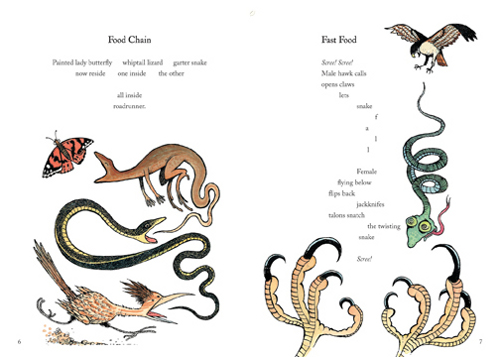
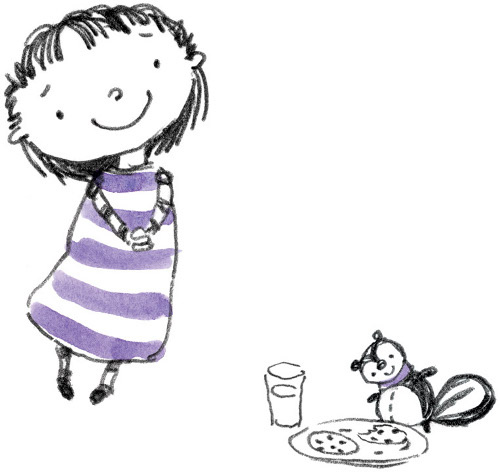
 Last February here at 7-Imp,
Last February here at 7-Imp, 